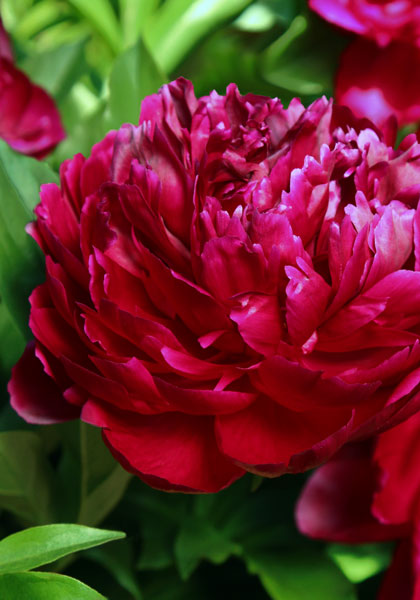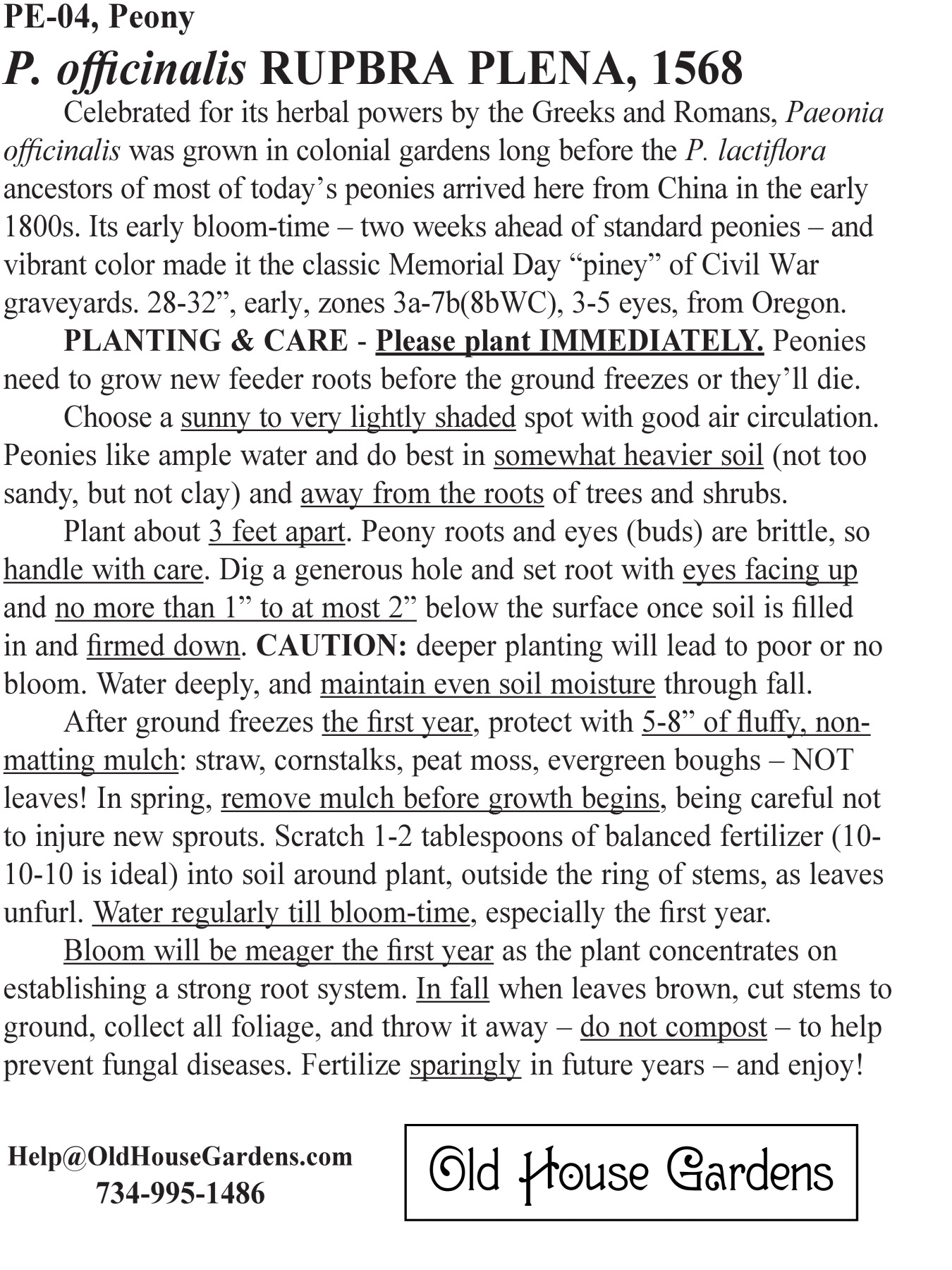|
|

 
|
|
Celebrated for its herbal powers by the Greeks and Romans, Paeonia officinalis was grown in colonial gardens long before the P. lactiflora ancestors of most of today’s peonies arrived here from China in the early 1800s. Its early bloom-time – two weeks ahead of standard peonies – and vibrant color made it the classic Memorial Day “piney” of Civil War graveyards. 28-32”, early, zones 3a-7b(8bWC), 3-5 eyes, from Oregon. |
|
ZONES 3a-7b(8bWC) HEIGHT 28-32” SOURCE Iowa, America, United States LIGHT full sun |
PLANTING & CAREPeonies are tough, undemanding perennials that can bloom happily for a century or more with little care. Plant in early fall. Do not delay! Since peonies are planted only 1-2 inches deep, the soil around them will freeze much earlier than it will for bulbs planted 6 inches deep. If they don’t have enough time to establish new feeder roots before the ground freezes, they will struggle and could fail altogether. Choose a sunny to lightly shaded spot with good air circulation and plenty of room for them to grow. Because they like ample water, they do best in somewhat heavier (clay) soils and away from the roots of trees and shrubs. Peony roots and eyes (buds) are brittle, so plant carefully. Dig a generous hole and position the rootstock so the eyes face up and are no more than 1-2 inches below the surface of the soil once it’s been filled in and firmed. Shallow is best; deep planting leads to poor or no bloom. Mark the spot with a stake or peony ring to protect it. Water deeply, and maintain even soil moisture until the ground freezes to help the plant develop as many feeder roots as possible its first fall. To protect these delicate new roots the first winter, apply a winter mulch. After the ground freezes, mound the newly planted area with 2-4 inches of soil or 5-8 inches of a fluffy, non-matting mulch such as straw, cornstalks, peat moss, or evergreen boughs — but not leaves. In spring, be sure to remove the mulch before top-growth begins, and be careful not to injure new sprouts. Different varieties will emerge at different times, so patience is advised. Scratch a couple of tablespoons of balanced fertilizer (10-10-10 is ideal) into the soil around the plant, outside the ring of stems, as its leaves begin to unfurl. Water throughout spring and till after bloom-time, especially the first year. Bloom will be meager the first year as the plant pours most of its energy into establishing a strong root system. More blooms will follow the second year, and even more the third. As you cut blooms, leave as much foliage as possible to continue feeding the plant. Staking – Even the strongest peony stems will bow when their gloriously double flowers are drenched by rain. Most of the time, though, they’ll stand back up if you gently shake the water out immediately afterwards, so most gardeners grow their peonies au naturel. We like to give them more support, though. See our Supporting Peonies page for two options: cheap and easy and the Hildene star. In the fall when the leaves begin to turn brown, cut the stems to the ground, collect all the foliage, and throw it away instead of composting it. Though peonies are generally healthy and tough, this will help prevent diseases such as powdery mildew, botrytis blight, and leaf blotch from getting a toehold or carrying over to the next season. After the first spring, fertilize only sparingly. Peonies generally need little fertilizer and plants that are over-fertilized will not bloom well. If you do fertilize, keep it away from the crown of the plant where there are no feeder roots. Spread it instead 6-18 inches from the crown, work it into the soil, and water well. Learn more about growing and enjoying peonies at our Peonies Newsletter Archives and Bulbs as Cut-Flowers page. |

|
SPRING
|
· |
SUMMER
|
· |
FALL
|
· |
LEARN MORE
|
· |
ORDERING
|

|










